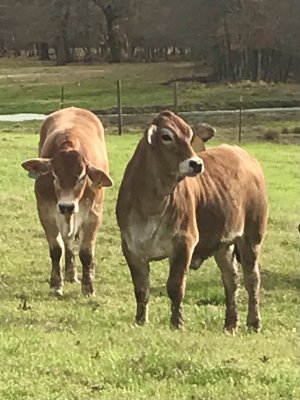Nick Wagner
Well-known member
Dad wasn't afraid to pull calves and I learned from it, today I pull one every few years. Could have been part of the equation. They were Polled Herefords. Grandpa had angus, was not afraid to pull calves, and to my knowledge never had a prolapsed uterus. My philosophy today is everything has a genetic component, sell your problems and eventually you have less problems.I wonder if Nick's 'familial correlation' to uterine prolapse might be because those cows brought big birthweight and/or small pelvic area to the equation.
What Bigfoot said...you've already fed her for 2 years...you're gonna feed her for another year and a half before she makes a payment on her keep. But...if it's a hobby, and not a business, no reason not to keep her if she breeds back.
Full disclosure...I've got a pet heifer that we pulled a big calf out of a month ago...calf died before I got it all the way out. She'll get another shot at it...but she's a pet, and the only cow I now own...a hobby...no less than the two horses standing in the pasture with her.
One time I castrated a baby calf that tipped the scale at 100 pounds, dad was upset because he might turn into a nice calf, exactly why the little bugger got castrated. Grandpa used a +7 birthweight bull one time, wild turkey I think was the bull's name, I could have shot him when I found out. Raising cattle is much less work than it used to be, but I miss them both.

